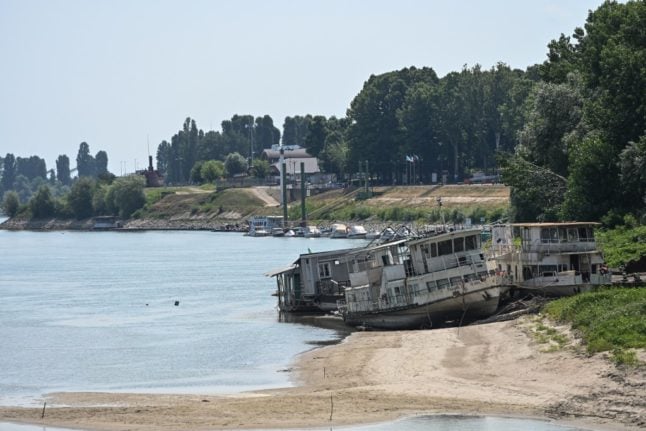Regional president Attilio Fontana told reporters on Thursday the situation was “extremely delicate” in the valley, which stretches across the north and houses a crucial agricultural sector.
Fontana said the drought was the worst in 70 years and that a state of emergency was likely to be declared for Lombardy, home to Milan, as well as three neighbouring regions: Piedmont, Veneto and Emilia Romagna.
The Po River is Italy’s largest reservoir of fresh water and much of it is used by farmers.
Some areas have now been without rain for over 110 days, according to the Po River observatory.
With no rain forecast, councils have begun installing water tankers and imposing hosepipe pans.
READ ALSO: How the climate crisis is hitting Europe hard
Utilitalia, a federation of water companies, has asked mayors in 100 towns in Piedmont and 25 in Lombardy to suspend nighttime drinking water supplies to replenish reservoir levels.
The drought is putting over 30 percent of national agricultural production and half of livestock farming in the valley at risk, Italy’s largest agricultural association, Coldiretti, said Thursday.
The low level of the Po is also leading to salt seawater infiltration into low-lying agricultural areas, compounding farmers’ problems, it said.

The report says that more than a quarter (28 percent) of Italian national territory is at risk of desertification, both in southern and northern regions.
Lake Maggiore and Lake Como in the north are also at worrying low levels – 22.7 percent and 30.6 percent respectively.
The problem in the Po Valley is worsened by the fact that the snow on the Lombard and Piedmontese Alps has completely run out, and it’s feared that the melting glaciers and mountain springs which helped alleviate the problem in May could also dry up in the coming months.
READ ALSO: Nine in 10 Italians ‘want more action on climate crisis’, new study finds
It’s “perfect storm, a year like this has never been seen before,” Meuccio Berselli, secretary general of the Po River District Authority, told the Ansa news agency.
“The snow on the Alps has completely disappeared, glaciers in a state of exhaustion, temperatures higher than average, scarce rains, hot winds that dry the soils … The Po has not had such a low flow rate for 70 years, but the truth is that we will see it even lower”.
Temperatures in the area are forecast to reach up to 30C over the weekend and up to 35C into next week.



 Please whitelist us to continue reading.
Please whitelist us to continue reading.
Member comments